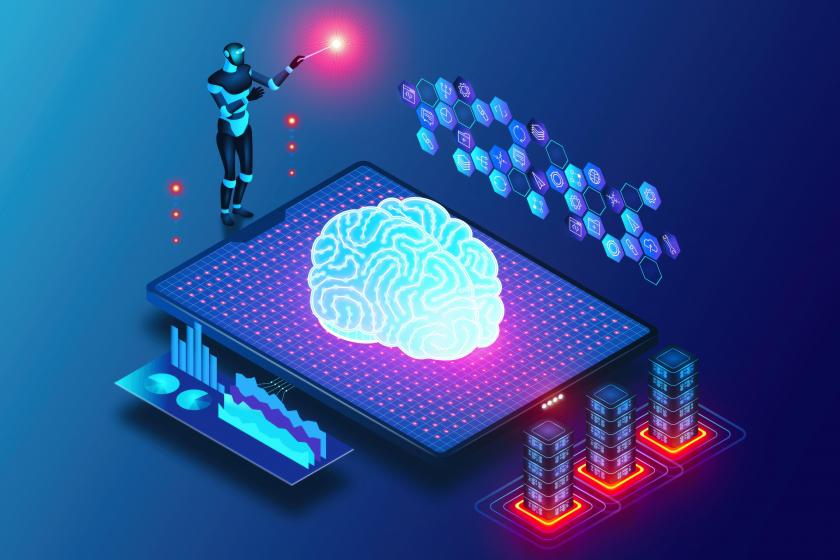Artificial Intelligence is taking the world by storm. In the world of enterprise networking, the use of AI is beginning to trickle into management and monitoring aspects, providing a glimpse into what we can expect in the future. Let’s look at what AI is and the potential it has for automating network operations in the near future.
What is AI in the context of network monitoring and management?
AI uses machine learning models to analyze data sets (training data) and works to formulate insights based on the modeling structure in use. From a network standpoint, AI can be used to input network traffic and telemetry data from switching and routing hardware. Baselines are then formed based on network traffic and health patterns that can then be used to identify, alert, and potentially alter network component configurations to optimize traffic flows or to identify and remediate potential security intrusions.
What are some examples where AI can be used to manage and monitor networks?
While there are numerous uses where AI can transform how networks will soon be managed and monitored, a few examples of existing NetOps and NetSecOps pain points are a great way to show the technology’s capabilities. One example is to use AI to baseline existing application traffic flows – and then alert on any anomalies that may indicate security incidents such as unauthorized intrusions or botnet communication. AI can not only be used to identify and alert on these types of events but also to automatically block, and quarantine networked endpoints that are participating in the questionable behavior.
A second use of AI that can assist greatly with human-caused network outages is to ensure that all network device adds and changes adhere to standards-based best practices before adding the changes to the production network. As many of us know, network switches and routers can be configured using thousands of services and functions that are commonly configured by humans using command-line syntax. AI can be used in conjunction with intent-based networking (IBN) methodologies so that the administrator simply informs the AI system of the business intent. Automation is then used to accurately translate that intent into the appropriate switch command syntax. Not only does this ensure that configurations are accurate, but it can go further to detect any potential conflicts that may hinder performance across the network.
Lastly, AI could be integrated into network orchestration and monitoring platforms to automatically detect rises in link congestion and implement traffic rerouting and load balancing techniques. This is opposed to static QoS and traffic management services that operate on an interface-by-interface basis. Because the AI would have an end-to-end view of network traffic loads across all devices, business-critical traffic could be preemptively and automatically routed around areas of congestion.
How should enterprises prepare for AI in network operations?
It’s important to note that deploying AI for network management and monitoring purposes will require steps to be taken before reaping the benefits. For those seeking to deploy AI within their existing networks, here are a few suggestions.
- Standardize network configurations – It will be critical for NetOps teams to eliminate configuration inconsistencies across switches and routers. This will be required by the AI to collect uniform configuration training data for baselining and standardization purposes. IBN orchestration platforms already exist on the market that help “level-set” configurations so that network policies are identical from one switch or router to the next.
- Consolidate network health/performance data – AI will also be trained using traffic flow and network telemetry data pulled from production network components. In many cases today, this data is extracted from network devices and sent to point-based monitoring and analysis tools. The better option would be to send all flow/telemetry data to a single data lake acting as a network source of truth (NSoT). This consolidates all data centralized management and increases the speed at which AI training sets can be created. It is also possible to then release specific data to point-based network operations tools using a Northbound API.
The last piece of advice is to start allocating NetOps resources to research how they should best plan to integrate artificial intelligence management and monitoring into their existing or future networks. AI is no longer a buzzword in the enterprise IT space – and it’s going to be here before we know it. Now is the time to start!
Related articles:









